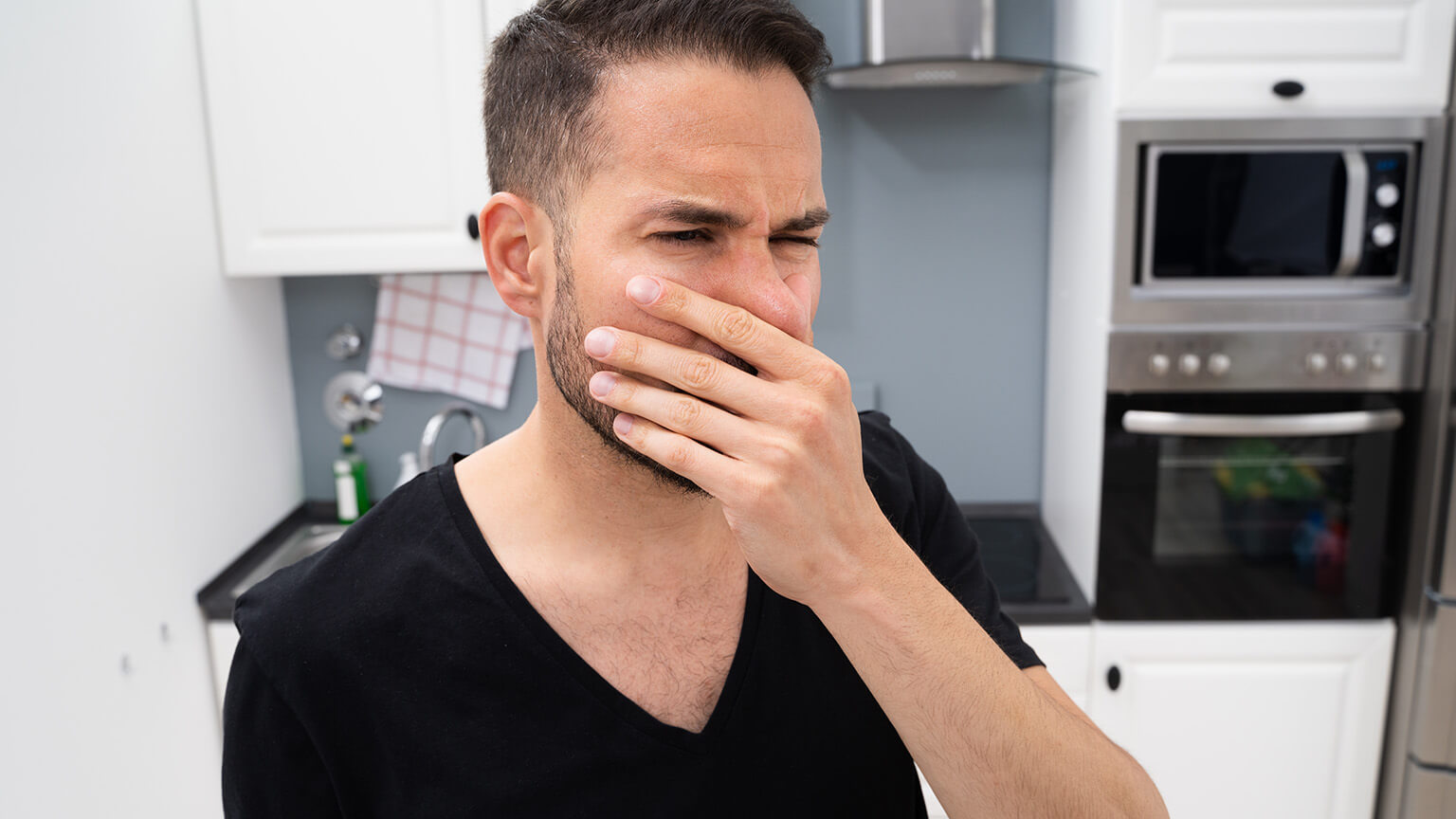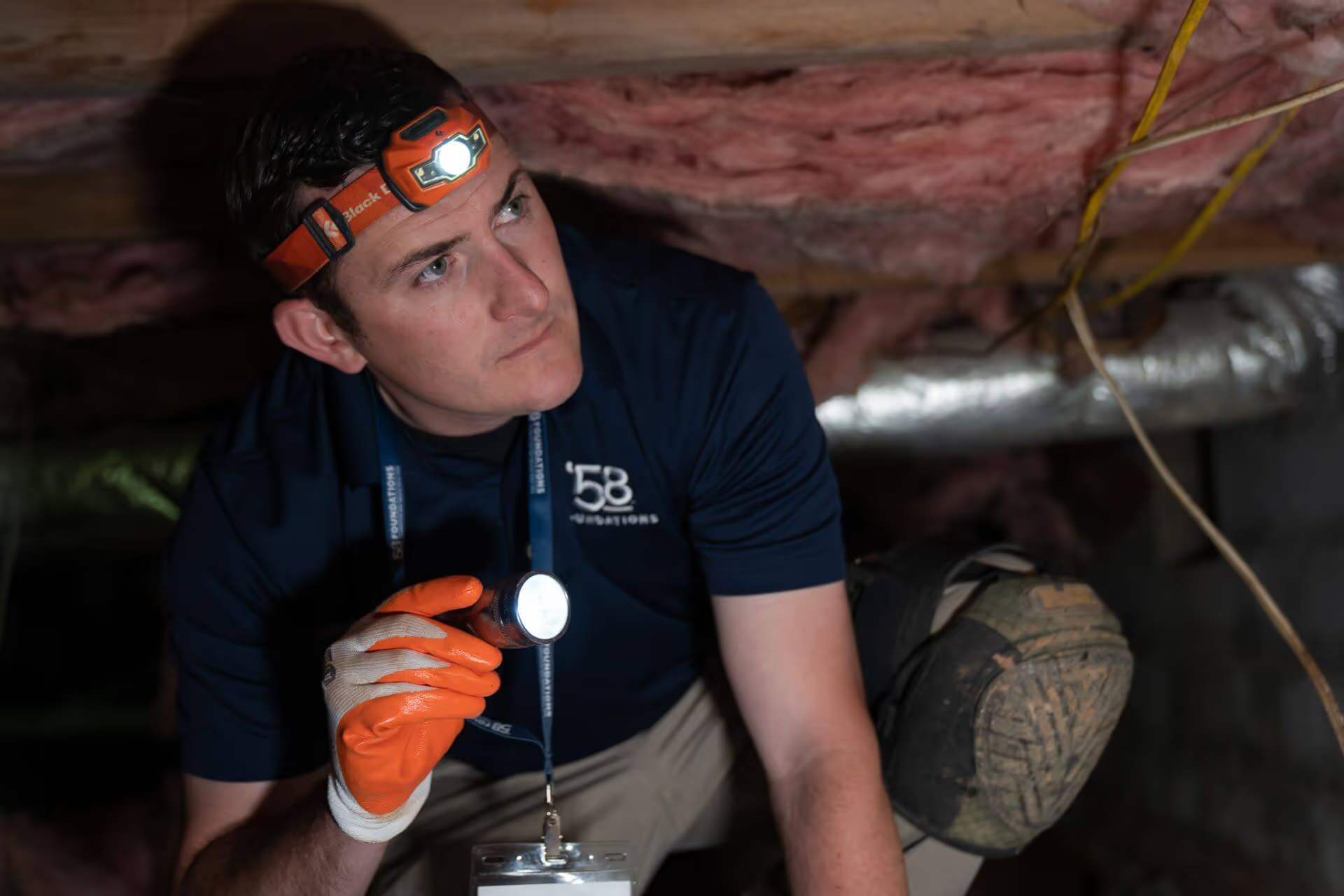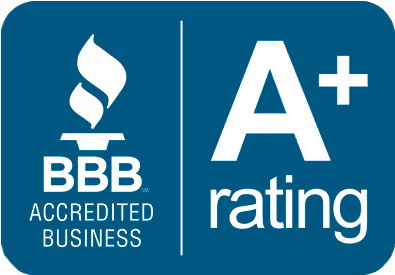
In most areas, the climate can get quite humid during the summer months. The relative humidity can average 80% during some months.
As the humidity rises, you’ve probably felt the air get muggy. While that’s to be expected, especially during the summer, it can be a different story if you’re noticing a change in the quality of your indoor air.
Does your home, especially your first floor, feel damp or humid? Does the air smell earthy or musty? Have you noticed an increase in allergy symptoms? If your home has a crawl space—this may be the source of your musty home problems!
Whether it’s that humid summer air flowing into your crawl space, or groundwater seeping out of the soil during a heavy rainstorm, the presence of moisture and water in your crawl space can cause a variety of problem scenarios to happen. That musty smell in your home is just a byproduct—but of what?
Mold loves moisture. This is why you’re likely to find mold growing on soggy, rotten logs and dead plant matter. It’s a key part of the natural cycle that returns rotting matter back to the soil.
Unfortunately, there are mold spores virtually everywhere we go. That also includes your crawlspace.
When moisture builds up and lingers around your crawl space, it can start to soak into the wooden structures of the crawl space. That same moisture can also cause mold spores on any wood to become active. With moisture to keep it alive and damp wood for a food source, the mold can begin to grow and colonize. In the process, the mold will start releasing new spores as part of its reproduction cycle.
Not only do these new spores help create new mold colonies in your crawl space, but those mold spores may also make their way to your living spaces above. As mold grows more in the crawl space, and mold spores begin to saturate the air in your home, that musty smell will also start to become noticeable.
But what’s making those mold spores reach your living spaces?
As warmer air rises in your home, it creates a difference in pressure that causes the house to suck in air from the outside into the lower parts of your home. As the air moves upwards in the house, the air in your crawl space is going to be pulled into your home’s living spaces. That also means anything in your crawl space air is being sucked up with it, including mold spores and that musty odor you’ve been smelling.
Up to 50% of the air you breath in your home comes from your under your home, according to the EPA.
While there is no way to prevent mold spores from entering your home, there is fortunately a way to keep most mold spores from growing and spreading! As mentioned earlier, mold loves moisture. But without that moisture, the mold spores either won’t be able to start growing or will remain dormant.
Removing the mold is always a smart idea even if you plan to remove the moisture. This is because some molds can survive at lower moisture levels. Even with the methods to remove the moisture noted below, removing any present mold is prudent.
Now that we know that your crawlspace can be a source of that moisture, the question is: How do we keep the moisture out?
That’s where crawl space encapsulation enters the scene. Essentially, encapsulation involves sealing your crawlspace away from outside air and intrusive moisture. A thick vapor barrier liner is used to encapsulate the crawl space, from the floors and walls to even the support columns. That way your crawl space is kept separated from that outside moisture and it can even be made into usable space.
Here are some of the products that might be used in crawl space encapsulation.
If your crawl space tends to flood or form puddles during a heavy rainstorm, it’s likely that your crawl space will also require crawl space waterproofing. This will involve the installation of drainage channels, a sump pump, and possibly other measures depending on your situation.
Your crawl space is just as much a part of your home as any other part. What’s more, the condition of your crawl space can have an impact on the comfort of your home. So, it makes sense that you’d want to have your crawl space encapsulated and/or waterproofed by a reliable expert.
While there are a lot of crawl space contractors out there, not all are made equal. You’ll want to do your research and make sure that the contractor of your choice has at least the following…
By checking off these requirements, you’ll improve your chances of finding an excellent crawl space company that can protect your home against moisture and help you breathe easy again without that musty mold! For one long-historied expert that has these four qualities, consider calling ’58 Foundations & Waterproofing for a free estimate for crawl space encapsulation and crawl space waterproofing solutions!
If you live near any of our offices (greater Knoxville, Chattanooga, or the Tri Cities; greater Atlanta; the Winston-Salem – Greensboro area; the Spartanburg – Greenville area; greater Richmond; Washington DC; greater Baltimore; Wilmington DE; Philadelphia and central PA) call us today for mold removal or crawl space encapsulation services!






We respect your privacy. By submitting, you authorize '58 Foundations and Waterproofing to reach you via call, email or text for information about your project needs. We will never share your personal information with third parties for marketing purposes. You can opt out at any time. Message/data rates may apply. Consent is not a condition of purchase. Privacy Policy